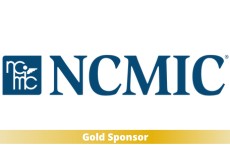
Out-of-Network Errors: How to Prevent Them
Brandy Brimhall joins to uncover common billing pitfalls, like out-of-network claim issues. Learn how verifying payer rosters upfront can save time, protect revenue, and improve patient trust.
Referenced Link:
Transcript:
Marc:
So we’ve got Brandy Brimhall with us again this week to talk a bit more about billing and some of the stream of challenges that we have in collections from revenue cycle management. She’s with Practisync, and would encourage you to reach out if you’re looking for some help with revenue cycle management, or from billing perspective, Practisync would love to have a conversation with you. But Brandi, we’re also talking about how to cure some of the challenges that we see and wasted time. We’ve talked about a few other things, including making sure that just the patient demographic information is nailed down and correct upstream. But one of the things that you and I talked about also includes this question that our doctors have a lot of times, on being in network or out-of-network. What do you see in that regard?
Brandy:
Yeah, so first, there are several things we talked just a moment ago about identifying interferences in our revenue cycle system and how to be more streamlined, because time is money too, right? And so to the question that you just posed to me, one of the many challenges we have when we’re billing is we assume that, since we’re enrolled with Blue Cross, United Healthcare, Cigna, at nor, whichever payer, that we are also enrolled with all of the plans and products that come under that payer. And that, unfortunately, isn’t true. It would be nice if it was. It was. It would make it very easy for us. However, one of the things that happens is we submit claims expecting that they’re going to process in network, because we believe we’re in the network with this payer, and yet our claims come back processed out-of-network.
It’s important to keep in mind that when that happens first, what we tend to do is think the payer has made a mistake, and so we find ourselves backing up and running into the same wall over and over and over again, not to suggest the payer may not have made a mistake, because that’s certainly possible. At the same time, I would say, having been on the other side of it a good many times, the vast majority of the time, it is an error on the clinic side, in just simply not knowing which plans and products you’re in network with under those payers. And so what we do is we spin our wheels and go to appeal, we make phone calls, we spend a lot of time and energy trying to get a claim, or multiple claims, in many cases, to process in network, when in fact, we’re actually out-of-network with that plan.
And so a couple of things that we need to do, first is identify which products and plans were in the network with, so we don’t find ourselves losing time and then money, of course, in backing up and running into that same wall. So step one is to get your payer roster, so you can see the list of the plans and networks you’re in network with, under your particular networks that you’re enrolled with. So you can go through Availity, through Optim, you can call Ash, you can call the networks, and gather that information. So those are the easy ways to go through and gather that information. And then you have the list of all of your plans and products that you’re in network with. If you find that you are, in fact, out-of-network, which certainly happens in many cases with certain plans you’re now seeing in your office, you can simply go and add to those enrollments to add those other plans to your existing contract, so those will begin to process in the network. So definitely important and helpful, because we just run into that so many times in clinics. And again, we tend to think the payer made a mistake, which, while that could be possible most of the time, it isn’t
Marc:
In this specific arena, right?
Brandy:
Exactly.
Marc:
I have obviously considerable problems with how some of our doctors’ claims are processed on a regular basis inappropriately, but in these cases, when we start talking about that, in and out-of-network. I think these are questions that we get at the ICS, and we want to make sure that you’re equipped. So in Illinois, let’s say it’s blues, because, I mean, with with the with the Blue Cross, Blue Shield, in Illinois, one of the things, I mean, you’ve got to look at there, there’s, I think there’s, there’s blue select, and there’s blue choice, and there’s a few others like that. Then, of course, you have the Blue Cross, Blue Shield MMAI, which is the Medicaid product, or the managed care organization for Medicaid products. Then, recently, they have their own, but also recently, they bought this entire Medicare Advantage book of business from Cigna, and so their Medicare Advantage programming is going to change as well. And so there are some questions there. But in all of that, can they just jump out there with Avalidity and pull up that roster? Is that? Is that how that works?
Brandy:
Yep, you can go straight to Availity, and you go to the payer spaces in Availability for your local payer, so your Blue Cross of Illinois, in this case, and there’s an option there to pull your plan roster, and you can pull that list. And again, a lot of the plans you’re seeing, some of them may not be on that list, especially if you were previously enrolled some years ago. Just like you mentioned, there’s new plans and products being added now. Some of them will automatically be added to your existing contract. Others won’t. They are the outlier plans that you’d have to go and add to your existing enrollment. So it is one of the things we just need to regularly keep our fingers on the pulse of because it does help us really just be more streamlined. And then remember, in this scenario, too, we’re also potentially miscommunicating with our patients collecting verifications in network when really it’s out-of-network, miscollecting from our patients at the time of service. So there’s this downstream impact that has other challenges that are created for us. So just having that information up front really helps us to, you know, make sure our revenue cycle system is as streamlined as possible.
Marc:
Yeah, and you’ve all heard me talk a lot about the business side of this. The you know, your participation in these networks, that’s a business decision that we encourage you to examine on a regular basis, and that includes whether or not you join a new network, whether or not you stay in network, or you know, whatever choices that you made and that their business decision portions it all is a business decision, if you will, to determine is that the best decision for your practice, in your geographic location, with your patient base and those you’re trying to reach, is that what you want to do, and sometimes it is and sometimes it isn’t, and make that decision specifically for your practice, but for those who have made the decision and feel like that, you’re not getting reimbursed appropriately in network, or just the opposite, where you believe that you’re in network and you’re being inappropriately reimbursed as an out-of-network doctor. In those cases, of course, that creates problems and challenges for the patient as well, because it changes their deductible, it changes their co-pays, it changes everything for them as well. And so in all those cases, you want to make sure that you’re nailed down and you’re giving that patient the best information up front as well, again. And also, what we don’t want you to do, and Brandy, I think you touched on this earlier, is we also don’t want you spinning your wheels and filing appeals and looking for other problems with the claim. And why am I getting rejected, and I’m already in network? Why are they saying I’m not, and you keep appealing it only to have it denied again and again and again? It’s a lot of time on your part, a lot of time of your staff, maybe can just get corrected upfront by verifying and having that roster and making sure that your staff has that roster available so they can correctly inform the patients when they check in.
Brandy:
Absolutely. Yeah. Before conducting those types of appeals where we think a claim is perhaps processed incorrectly out-of-network, when we think it should be in network, step one, to me, would always be, let’s verify that this is a plan that we are in the network with, and then spend the time appealing it or not, or communicating correctly with your patient and making sure you’re on the same page there, or adding that plan to your existing enrollment. So there’s a different first step from my perspective that would be more efficient all around, and just like you touched on, and we both did actually a moment ago, is the downstream impact, is the patient relationship as well, among other things. But we want to make sure that we’re doing our best to make sure that that stays properly intact.
Marc:
Awesome. Thank you, Brandy, and we’ll catch you all next week.
















